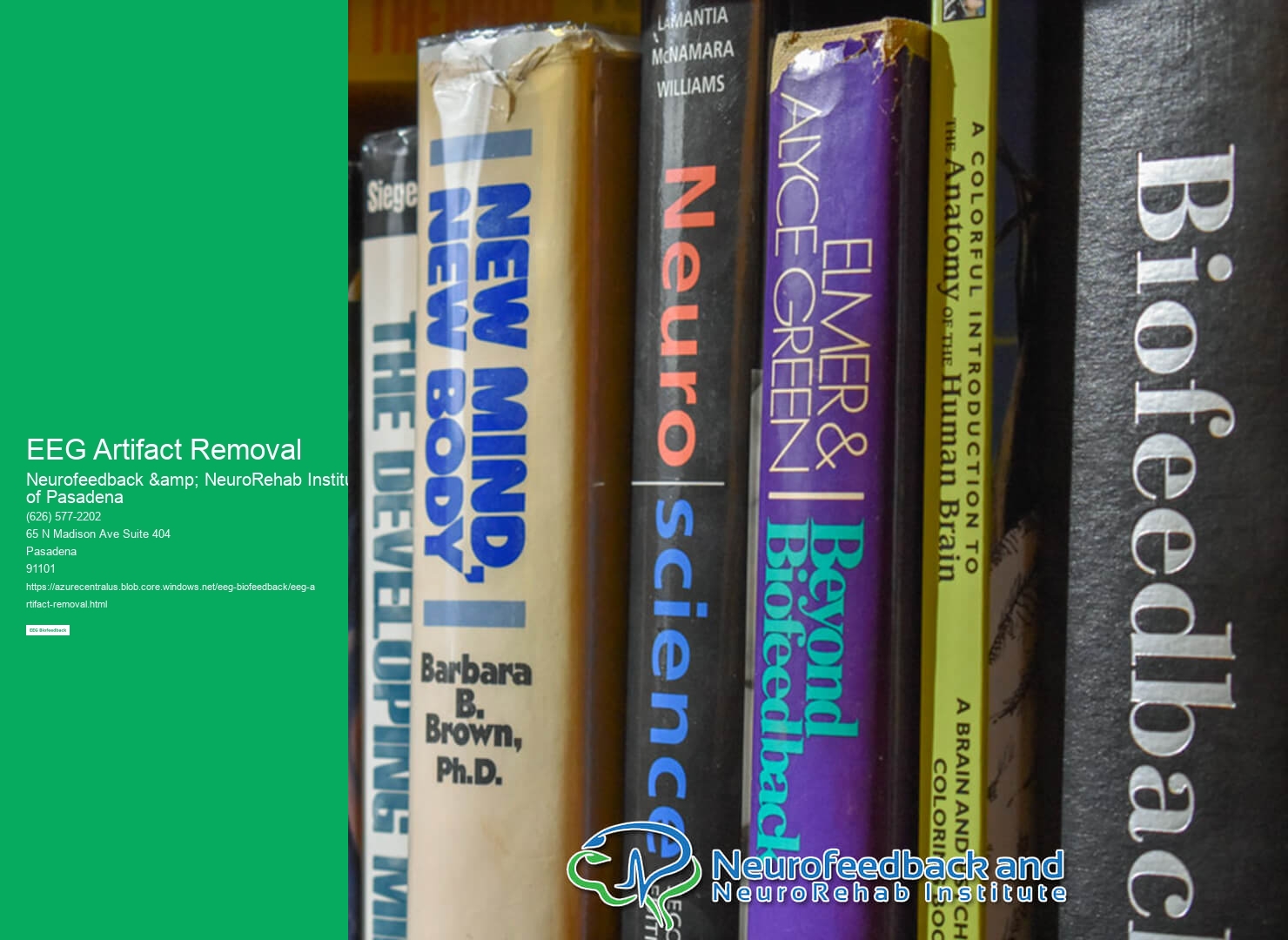

In EEG recordings, there are several common types of artifacts that can be observed. One type is the movement artifact, which occurs when the subject moves their head or body during the recording. This can result in large amplitude fluctuations in the EEG signal. Another type is the eye movement artifact, which is caused by the movement of the eyes. This artifact appears as sharp, transient deflections in the EEG signal. Muscle artifact is another common type, which is caused by the contraction of muscles near the electrodes. This artifact appears as high-frequency noise in the EEG signal. Finally, there can be electrode artifacts, which are caused by poor electrode contact or impedance. These artifacts can result in irregular or noisy signals in the EEG recording.
Eye movement artifact can have a significant impact on EEG signals. When the eyes move, it can cause large amplitude deflections in the EEG signal, making it difficult to interpret the underlying brain activity. To remove eye movement artifact, various techniques can be used. One common approach is to use independent component analysis (ICA), which separates the EEG signal into independent components, one of which represents the eye movement artifact. This component can then be removed from the signal. Another approach is to use regression techniques, where the eye movement artifact is modeled and subtracted from the EEG signal. Additionally, eye movement can be monitored using electrooculography (EOG) electrodes, and the recorded eye movement signals can be used to correct for the artifact in the EEG signal.
Muscle artifact in EEG recordings can be caused by the contraction of muscles near the electrodes. This artifact appears as high-frequency noise in the EEG signal, which can obscure the underlying brain activity. To minimize the impact of muscle artifact, several techniques can be used. One approach is to use filtering techniques, such as high-pass filters, to remove the high-frequency noise caused by muscle artifact. Another approach is to use spatial filtering techniques, such as common spatial patterns (CSP), which can separate the muscle artifact from the brain activity based on their spatial distribution. Additionally, muscle artifact can be minimized by ensuring proper electrode placement and reducing muscle tension during the recording.

Environmental noise can indeed affect EEG recordings and can introduce unwanted artifacts into the signal. Common sources of environmental noise include electrical interference from nearby electronic devices, electromagnetic fields, and ambient noise. To mitigate the effects of environmental noise, several measures can be taken. One approach is to use shielding techniques, such as Faraday cages, to block external electromagnetic interference. Another approach is to use active noise cancellation techniques, where the noise is measured and subtracted from the EEG signal in real-time. Additionally, recording the EEG signal in a quiet and controlled environment can help minimize the impact of ambient noise.
Electrode artifacts can have a significant impact on EEG signals. Poor electrode contact or impedance can result in irregular or noisy signals in the EEG recording. This can make it difficult to interpret the underlying brain activity. To identify electrode artifacts, it is important to regularly check the impedance of the electrodes during the recording. High impedance values can indicate poor electrode contact and may require repositioning or reattaching the electrodes. Additionally, visual inspection of the EEG signal can help identify irregular or noisy segments that may be caused by electrode artifacts. To correct electrode artifacts, the electrodes can be repositioned or reattached to ensure proper contact and impedance.


There are several techniques and algorithms available for automatic artifact removal in EEG. One common approach is independent component analysis (ICA), which separates the EEG signal into independent components, one of which represents the artifact. This component can then be removed from the signal. Another approach is template matching, where templates of known artifacts are compared to the EEG signal, and the artifacts are identified and removed. Machine learning algorithms, such as support vector machines (SVM) or deep learning models, can also be used to automatically detect and remove artifacts from the EEG signal. These techniques can help improve the quality of the EEG data and facilitate more accurate interpretation and analysis.
The presence of artifacts in EEG data can have a significant impact on its interpretation and analysis. Artifacts can distort the underlying brain activity, making it difficult to accurately identify and analyze specific patterns or events in the EEG signal. They can introduce noise and irregularities, which can affect the results of various analyses, such as event-related potentials or spectral analysis. Additionally, artifacts can lead to false positives or false negatives in the detection of specific brain states or abnormalities. Therefore, it is crucial to identify and remove artifacts from the EEG data to ensure the validity and reliability of the results. By minimizing the impact of artifacts, researchers and clinicians can obtain more accurate and meaningful insights from EEG recordings.

EEG biofeedback, also known as neurofeedback, has shown promise in workplace settings for stress reduction and performance improvement. By measuring and providing feedback on brainwave activity, individuals can learn to self-regulate their brain function and achieve a state of optimal performance. This non-invasive technique has been used to address a range of workplace challenges, including stress management, attention deficits, and anxiety. Through the use of specialized equipment and training protocols, employees can learn to recognize and modify their brainwave patterns, leading to improved focus, productivity, and overall well-being. EEG biofeedback has the potential to be a valuable tool in promoting a healthy and productive work environment.
There are indeed specific EEG biofeedback protocols that have been developed for the purpose of improving memory and cognition. These protocols typically involve training individuals to regulate their brainwave activity in specific frequency bands that are associated with memory and cognitive processes. For example, one common protocol is called alpha-theta training, which involves increasing the amount of alpha and theta brainwave activity, as these frequencies have been linked to enhanced memory and creativity. Another protocol is called SMR training, which focuses on increasing sensorimotor rhythm activity, as this has been associated with improved attention and focus. These protocols often involve the use of neurofeedback software and equipment to provide real-time feedback to the individual, allowing them to learn how to self-regulate their brainwave activity and improve their memory and cognitive functioning.
Cognitive tasks that are commonly incorporated into EEG biofeedback protocols encompass a wide range of mental activities aimed at enhancing cognitive functioning. These tasks often involve attention, memory, executive functions, and information processing. Attention-based tasks may include sustained attention tasks, where individuals are required to maintain focus on a specific stimulus for an extended period of time. Memory tasks may involve working memory exercises, where individuals are asked to remember and manipulate information in their mind. Executive function tasks may include tasks that require individuals to plan, organize, and problem-solve. Information processing tasks may involve tasks that require individuals to process and respond to stimuli in a timely manner. By incorporating these various cognitive tasks into EEG biofeedback protocols, individuals can improve their cognitive abilities and enhance their overall mental performance.
Peak alpha frequency assessment is a valuable tool in understanding cognitive states due to its ability to provide insights into the functioning of the brain. By measuring the frequency at which alpha waves are most prominent, researchers can gain information about an individual's attention, relaxation, and overall cognitive performance. This assessment is particularly significant because alpha waves are associated with a relaxed and focused state of mind. Therefore, by analyzing the peak alpha frequency, researchers can determine the level of cognitive engagement and mental clarity experienced by an individual. This information can be used to assess cognitive states in various contexts, such as evaluating the effectiveness of cognitive training programs, monitoring changes in cognitive function over time, and identifying potential cognitive impairments. Overall, peak alpha frequency assessment offers a valuable and objective measure of cognitive states, providing valuable insights into the functioning of the brain.
There are several types of software commonly used for implementing EEG biofeedback protocols. One popular option is Neurofeedback software, which allows for real-time monitoring and analysis of brainwave activity. This software often includes features such as customizable protocols, data visualization tools, and the ability to track progress over time. Another commonly used software is Biofeedback software, which focuses on providing feedback on physiological signals such as heart rate, skin conductance, and muscle tension. This type of software can be used in conjunction with EEG biofeedback to provide a more comprehensive approach to training and monitoring. Additionally, there are specialized software programs designed specifically for certain applications, such as neurofeedback for ADHD or meditation training. These programs often include tailored protocols and exercises to address specific needs and goals. Overall, the choice of software will depend on the specific requirements of the EEG biofeedback protocol and the goals of the user or clinician.
Z-score training is a technique used in EEG biofeedback sessions to help individuals regulate their brain activity. It involves the use of statistical analysis to compare an individual's brainwave patterns to a normative database. The Z-score is a measure of how far a particular brainwave value deviates from the average value in the database. During training, the individual is provided with real-time feedback on their brainwave activity, typically in the form of visual or auditory cues. The goal is to teach the individual to self-regulate their brainwave activity and bring it within the desired range. This can be achieved through various techniques, such as relaxation exercises, cognitive strategies, and mental imagery. Z-score training has been found to be effective in addressing a range of conditions, including attention deficit hyperactivity disorder (ADHD), anxiety, and depression.
EEG biofeedback, also known as neurofeedback, is a non-invasive technique that measures and provides feedback on brainwave activity. While it is primarily used for therapeutic purposes, there is growing interest in its potential to enhance cognitive abilities such as creativity and problem-solving skills. Research suggests that EEG biofeedback can help individuals achieve a state of relaxed focus, known as the alpha state, which is associated with increased creativity and improved problem-solving abilities. By training individuals to regulate their brainwave patterns, EEG biofeedback may facilitate the development of cognitive flexibility, divergent thinking, and the ability to generate innovative solutions to complex problems. However, it is important to note that the effectiveness of EEG biofeedback in enhancing creativity and problem-solving skills may vary among individuals, and further research is needed to fully understand its potential benefits in this regard.